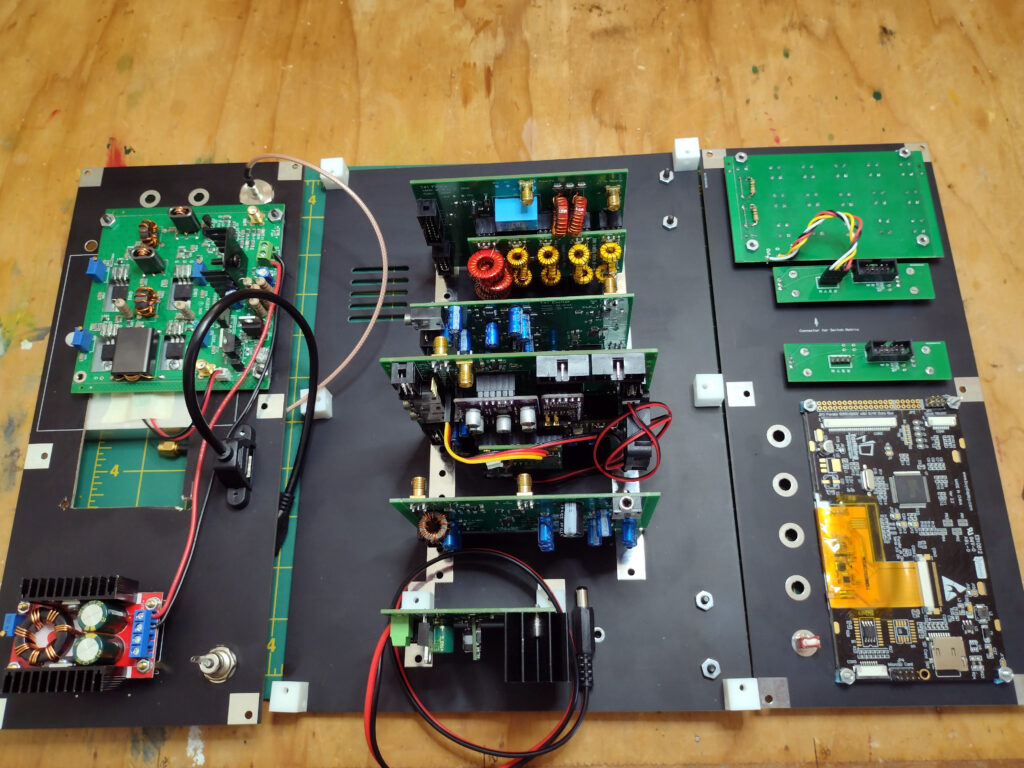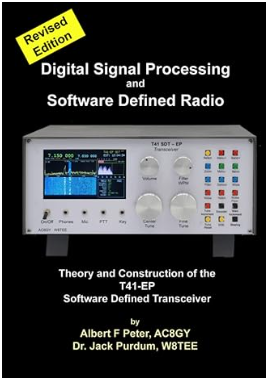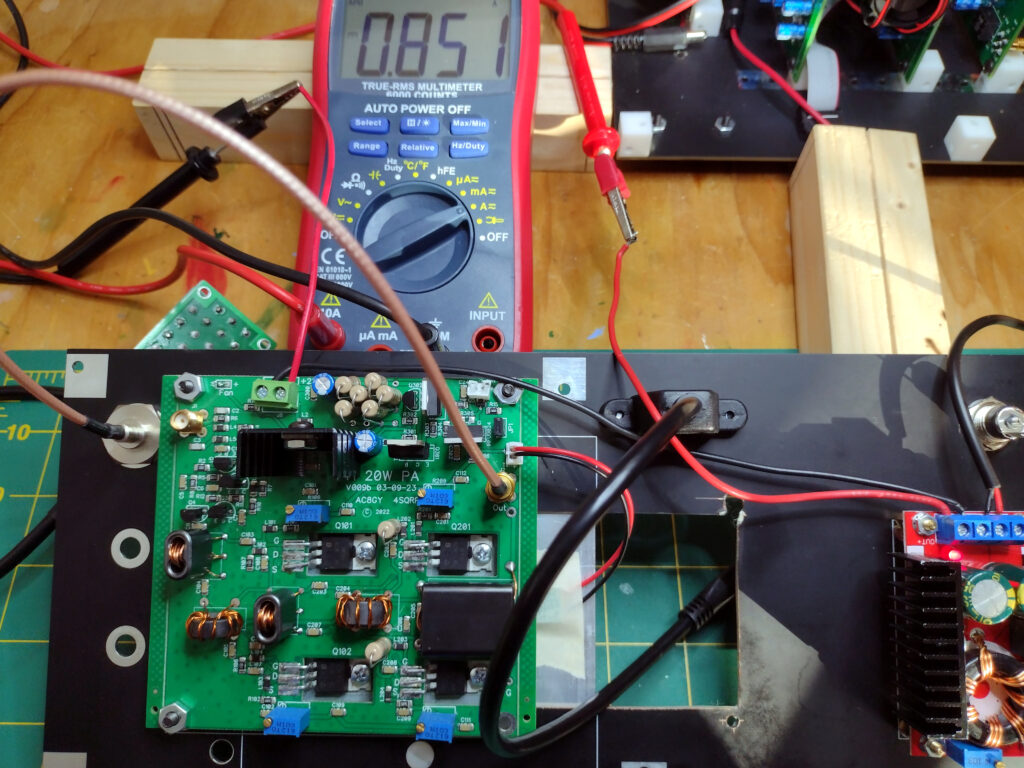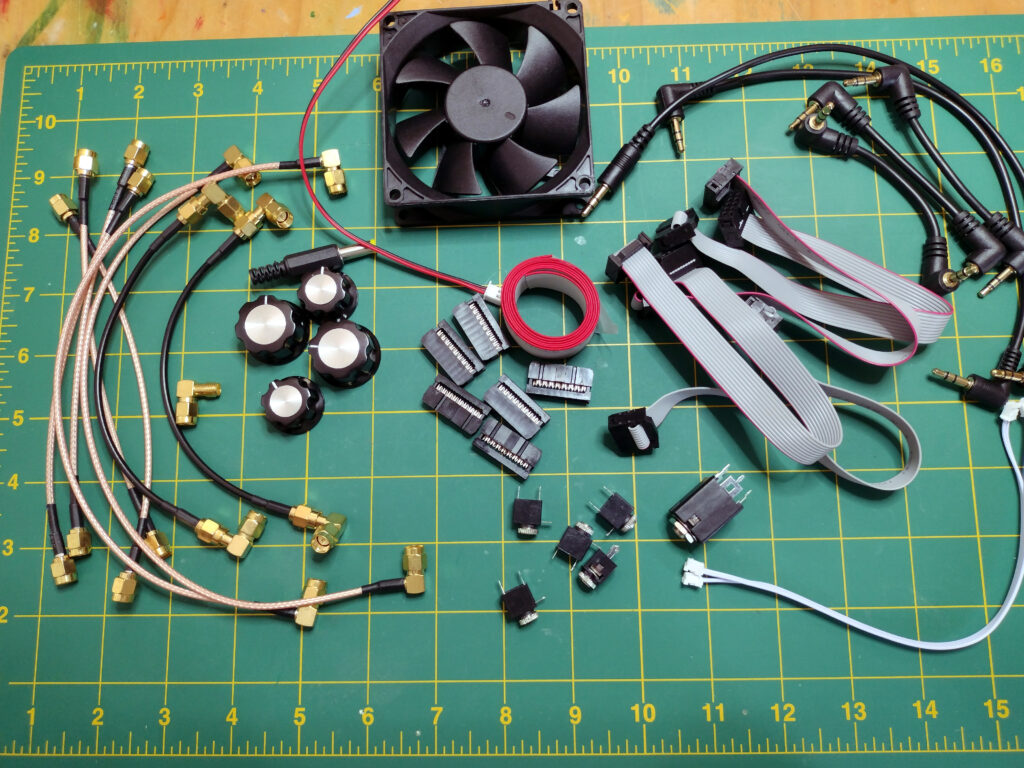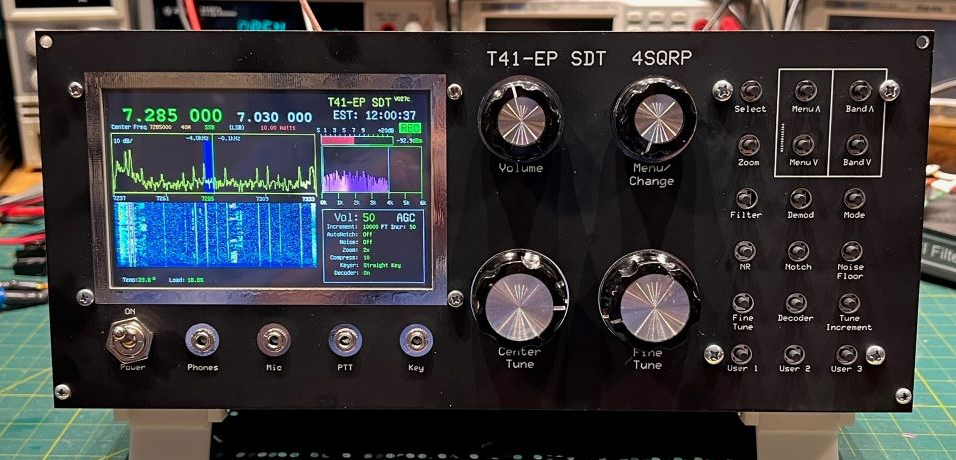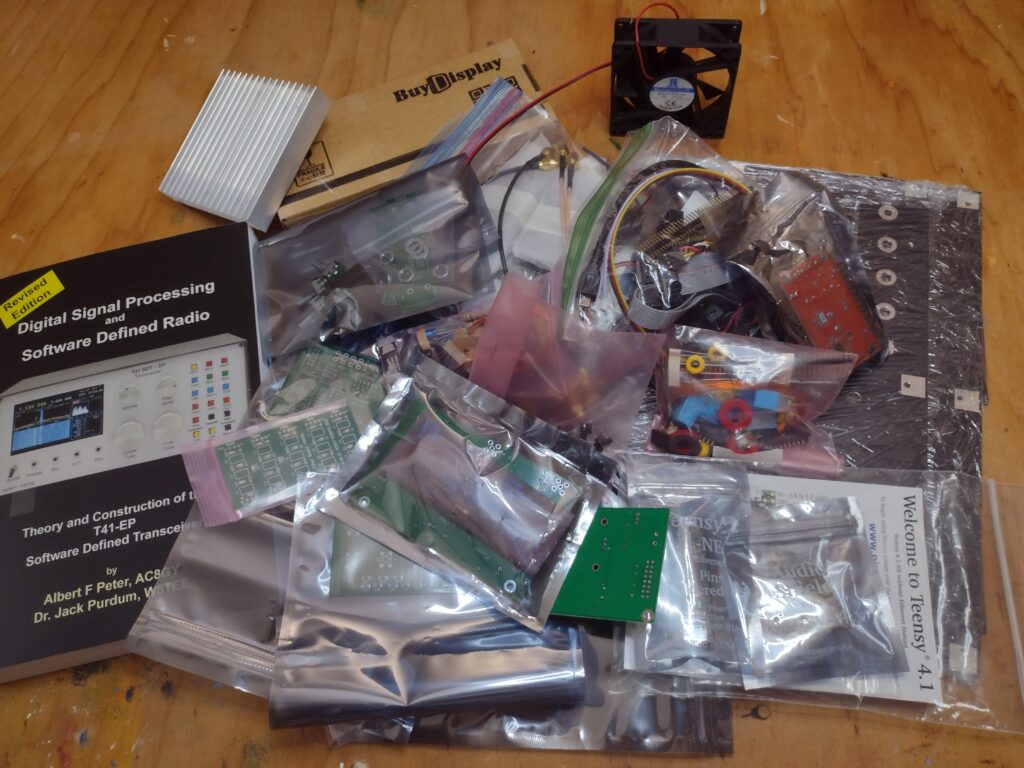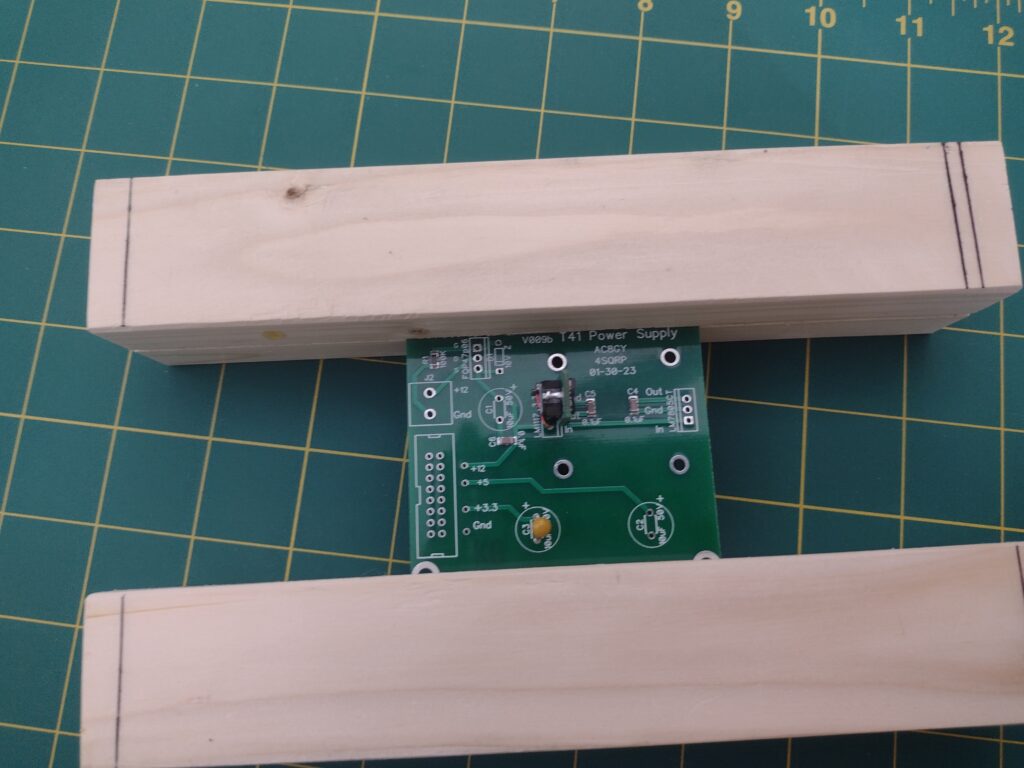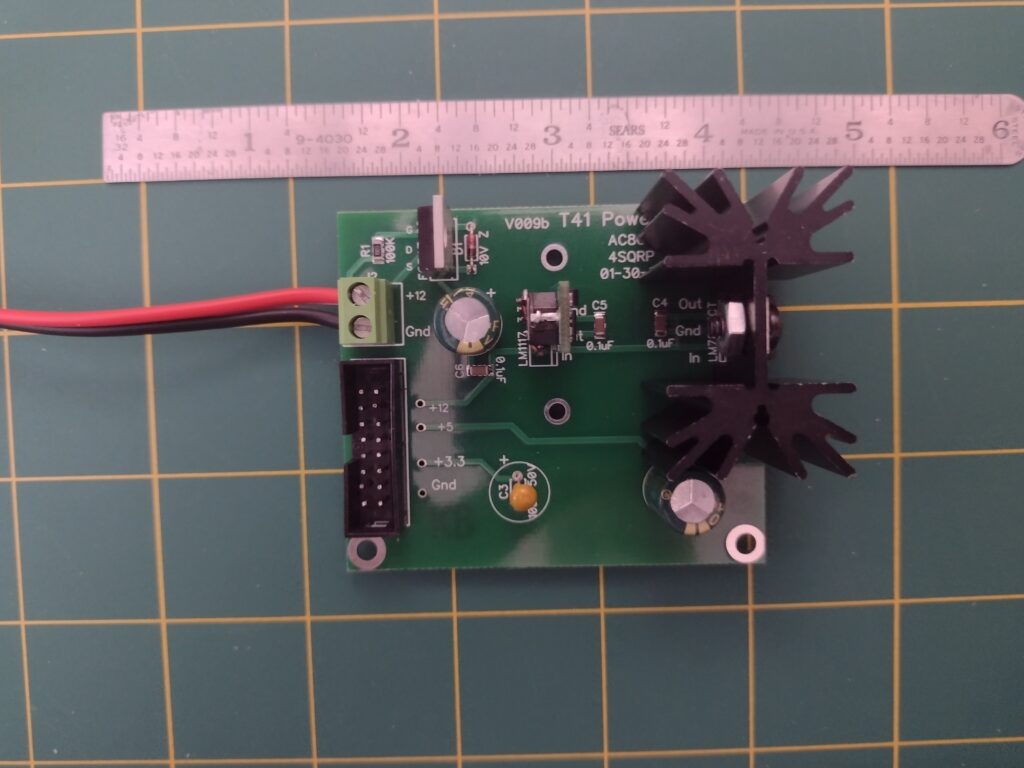When we last visited this radio, it was almost complete. That’s when I decided to switch out the power amplifier. The “-EP” in the name means “Experimental Platform.” Let’s experiment. The reason is because of reports of poor power output on higher bands due to the original power amplifier using transistors with a very steep output falloff above 20 Mhz. A newer power amp has a much flatter frequency response at 20 watts output. (I only want 5, but will appreciate the extra headroom.)
The semi-kit by K9HZ Bill Schmidt arrives as a PCB (Printed Circuit Board), a few semiconductors, a few transformer cores, some wire, and a BOM (Bill Of Material) for the rest of the parts. Almost all of the parts were SMD (Surface Mount Devices), giving me the opportunity to learn a new skill. 🙂 Despite needing a very good magnifying glass and a jeweler’s loupe, construction went very well.
So did initial power testing. The fun came along at the next stage, when the “bias” potentiometers are adjusted to produce the correct current flow through each of the power transistors. For that, the amp needed a signal voltage from the transceiver. So, I mounted it in the case and hooked up power.
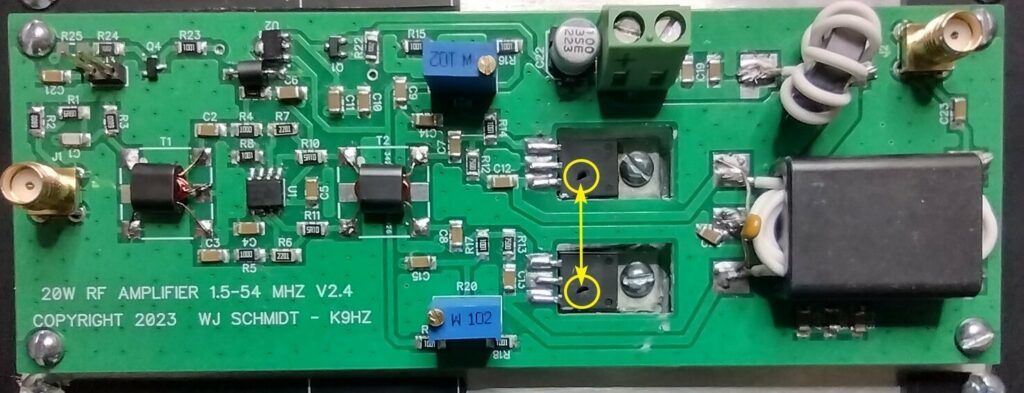
A very quick “POP-POP” was the response on flipping the rig’s power switch. Puffs of smoke from new holes in the power transistors floated up. All electronic devices are powered by smoke and once you let the smoke out, they no longer work. ;{
What the???? User error, of course. Wrong polarity power. I tried using a new battery, a new LiFePO4. It is a very nice battery that will serve well as a base station power source. My mistake was NOT making up new power cables, but using a couple that were in the box. Hey, these two fit together. I blithely went ahead without realizing that using them in series, instead of alone, produced a polarity reversal. Stupid error! … POP-POP and along with it lesser POPs and PFFFTs inside the mostly complete T41.
As I write this, I don’t know the extent of the collateral damage. After replacing a few parts on the power board, the rest of the T41 does not come to life and there are significant voltage drops on the 5V line. It may be time for an extensive rebuild.
UPDATE: There are enough “anomalies” with the existing build that I’ve decided to rebuild completely using the V12 version of the T41. More function, refined RF specs, and known-good hardware are some of the reasons.
Meanwhile, I can easily rebuild, and correctly test the power amp. It is independent of the main radio and easily rebuilt.
P.S. Safety glasses recommended for first power. In this case, it was under a magnifying glass which stopped the remnants.
